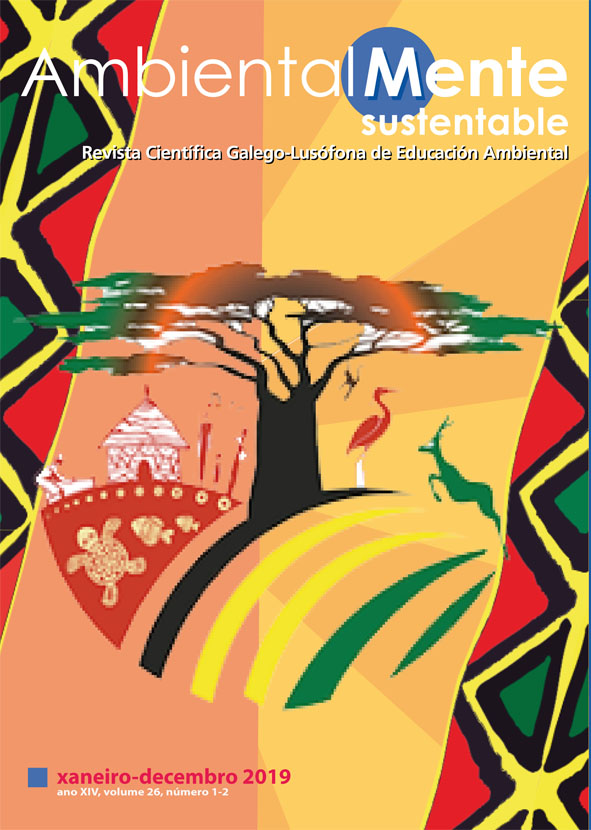Look to the side Inmetro’s partnership with schools for the UN 2030 Agenda
Main Article Content
Abstract
Inmetro’s Environmental Education team has sought to raise awareness in favor of biodiversity conservation, based on the 2030 Agenda, especially among the institution’s management staff. Its laboratory campus occupies a central position in relation to four rain forest conservation units and contributes to the connectivity between remnants in the fragmented landscape of Rio de Janeiro’s outskirts. Through Environmental Education, it opens way for practices that minimize negative environmental impacts and promote the recovery of riverside areas and degraded slopes. The main strategy is to promote events in the campus with the participation of students from and the involvement of entities that participate in the advisory councils of protected areas. Internal communication of these events, and their outcomes, can reach everybody, below and above in the institution hierarchy. The campus central place in the landscape corresponds to a centrality in relation to the interested parties, placing the institution, as a bridge organization, in a prime position to articulate environmental initiatives for sustainable development. This paper presents aspects of the most recent work of the Environmental Education at Inmetro and its perspectives for the future.
Keywords:
Downloads
Article Details
References
Abirached, CFA (2014). et al. Conselhos Gestores de Unidades de Conservação Federais: um Guia para Gestores e Conselheiros.
ASPEA-Associação Portuguesa de Educação Ambiental (2019). Projeto Rios: Conhecer. [Disponível em https://aspea.org/index.php/conhecer]
Bertini, M (2003). Diagnóstico sobre a educação ambiental nas escolas públicas do ensino fundamental e médio no município de São Carlos, Estado de São Paulo. Dissertação de mestrado. Universidade de São Paulo, Escola de Engenharia de São Carlos.
Bortolozzi A. e A. Perez (2000). “Diagnóstico da Educação Ambiental no ensino de Geografia”, Cadernos de Pesquisa, n° 109, março.
Brasil (1997). Lei 9.433/1997. Institui a Política Nacional de Recursos Hídricos [...].
Brasil (1999). Lei 9.795/1999. Dispõe sobre a educação ambiental, institui a Política Nacional de Educação Ambiental e dá outras providências.
Brasil (2000). Lei 9.985/2000. Regulamenta o art. 225, §1o, incisos I, II, III e VII da Constituição Federal, institui o Sistema Nacional de Unidades de Conservação da Natureza e dá outras providências.
Brasil (2012). Lei 12.651/2012. Dispõe sobre a proteção da vegetação nativa [...].
Cash DW., W. Adger, F. Berkes et al. (2006). Scale and cross-scale dynamics: governance and information in a multilevel world. Ecology and Society 11(2): 8.
Crona BI. e JN. Parker (2012). Learning in support of governance: Theories, methods, and a framework to assess how bridging organizations contribute to adaptive resource governance. Ecology and Society 17: 32.
Duque de Caxias (2013). Lei nº 2515/2013. Institui, no âmbito do Município de Duque de Caxias, a Política Municipal de Educação Ambiental e dá outras providências.
Folke C., T. Hahn e P. Olsson et al. (2005). Adaptive governance of social-ecological systems. Annu. Rev. Environ. Resour., v. 30, pp. 441-473.
Hahn, T., P. Olsson, C. Folke e K. Johansson (2006). “Trust-building, knowledge generation and organizational innovations: the role of a bridging organization for adaptive co-management of a wetland landscape around Kristianstad, Sweden”, Human Ecology 34, pp. 573–592.
Machado J (2008). “Um estudo diagnóstico da Educação Ambiental nas Escolas do Ensino Fundamental do Município de Piracicaba/SP”, Anais IV Encontro Nacional da Anppas. Brasília, DF.
Mónico L., V. Alferes, P. Castro, P. Parreira (2017). “A Observação Participante enquanto metodologia de investigação qualitativa”, Atas CIAIQ, Investigación Cualitativa en Ciencias Sociales v. 3, pp. 724-733.
Olsson, P., C. Folke, V. Galaz, T. Hahn e L. Schultz (2007). “Enhancing the fit through adaptive co-management: creating and maintaining bridging functions for matching scales in the Kristianstads Vattenrike Biosphere Reserve Sweden”, Ecology and Society 12(1): 28.



